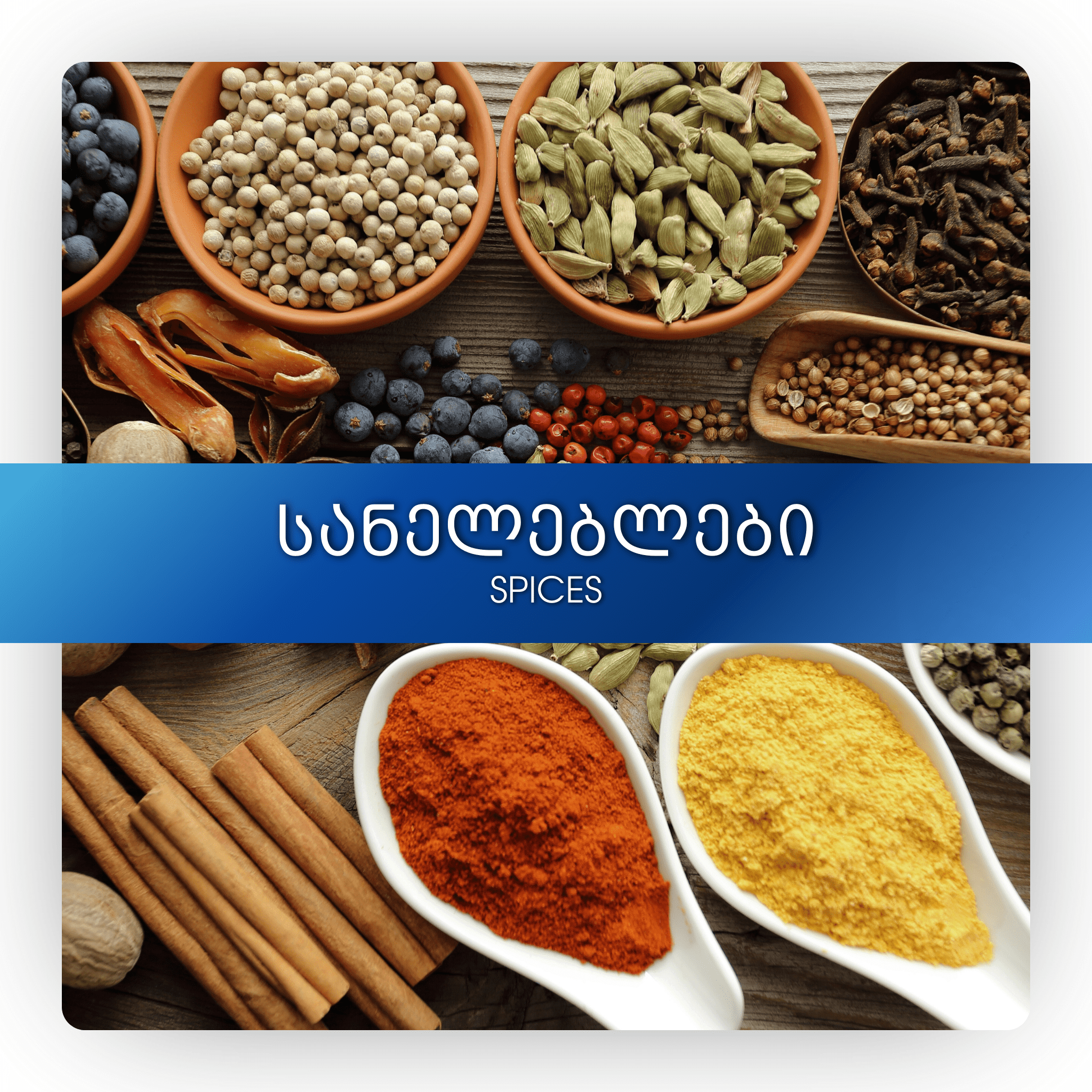Spices
Natural food flavorings and specific taste and smell compounds for foods include spices, seasonings and some other flavoring substances.
A large group of flavoring substances are spices - plant products with pronounced taste and aroma, which are used to improve the taste and aroma of human food; However, spices and dried vegetables can to some extent be considered food ingredients rather than additives, as they are widely used in the preparation of many foods.
Flavoring substances are used as digestive aids, because under their influence the secretion of enzymes of the digestive glands of different areas of the gastrointestinal tract is significantly activated, their enzymatic activity is strengthened. Thanks to all this, the process of food processing and assimilation improves.
A large assortment of flavoring substances is used in culinary, which can be divided into the following groups:
A) spices - pepper, cinnamon, cloves, ginger, ginger and others.
b) spices, vegetables - parsley, onion, garlic, dill and others.
c) artificial and synthetic flavoring substances.
Spices are separate dried parts of spice plants, which are distinguished by particularly pronounced aromatic and taste properties. These properties are mainly due to volatile substances - oils, and rarely - non-volatile and hard-to-volatile irritants.
Spices are interesting not only as flavoring agents, but also as a source of antioxidants. For example, many spices (cloves, ginger, anise and others) are characterized by pronounced antioxidant properties and have the ability to inhibit the peroxidation process in the body. On the other hand, it is not recommended to use them in unlimited quantities, because some spices act as irritants and stimulants on the central nervous system, kidneys, liver and others.
Mustard is one of the most common and popular spices. Table mustard is made from mustard powder, which is added to vegetable oil, vinegar, sugar, salt and others. In medicine, mustard seeds are used as an irritant in the form of mustard alcohol (a 2% alcohol solution of mustard essential oil) and mustard poultices.
Pepper is the most popular, well-known and widespread spice. It is used by people living in all countries and regions of the world. Red pepper (paprika) contains caprancin (which gives it a bitter taste) and substances that give it a red color - carotenoids.
Bay leaves are used in the form of dried leaves, the specific smell of which is due to the content of essential oils in them.
Vanilla belongs to the group of natural aromatic substances and is the specially processed pods of tropical orchids and some other tropical plants that contain vanillin. The vanillin content in vanilla varies from 1.6 to 2.9%.
Ginger is used in the production of liquors and confectionery products. Dried and cleaned roots of this plant are used to prepare vegetable marinades, puff pastry products.
Anise is widely used in cooking, mainly in confectionery production. It contains up to 5% essential oil. In addition, anise seeds contain 16-20% vegetable oils that stimulate digestion processes.
Cumin is mainly used in bakery production. Its taste and aroma are determined by the content of essential oils in the fruits (3-6.5%). Anise and aniseed have a similar taste and smell.
Tarragon is used as a spice for making marinades, salads, sauces. In Georgian cuisine, it is an essential ingredient of the well-known "chakafuli"; We also use it raw as a herb. In addition, tarragon tincture is widely used in the production of non-alcoholic drinks, syrups and liqueur-vodka.
Marjoram is used as a spice to prepare salads, soups, fish, meat or vegetable dishes. The peculiar taste of the leaves and flower buds is due to the content of essential oils in them (0.3-0.4%).
Mint is used in the food industry and cooking, mainly in the production of food products, alcoholic and non-alcoholic drinks, syrups, some types of confectionery, and chewing gum. Its taste and aroma is determined by the content of essential oil - menthol (up to 3%).
Dill contains essential oils (2.5-5%), aromatic substances, proteins (2.5%), potassium, calcium, phosphorus, iron salts, carotene, vitamins; It is used for making dishes and preserves.
Illy is a tropical plant with walnut-shaped seeds that contain 3-4% essential oil; In confectionery production, it is mainly used to make flour products;
Coriander, parsley and other herbal spices are also characterized by aromatic and taste properties due to the content of essential oils. Together with seasoning vegetables, they are widely used in the food industry.
Many representatives of spices are characterized by pronounced pharmacological properties, which is why they are used both in traditional and folk medicine.
